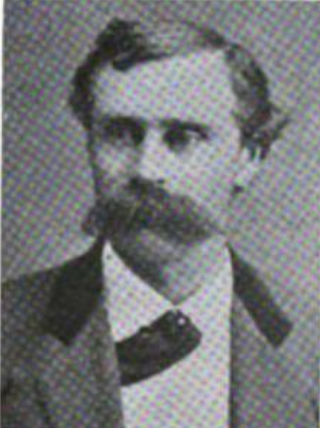George Ely Pingree
George Ely Pingree was born on April 29, 1839, in Littleton, New Hampshire, to Joseph and Polly Pingree. His parents probably died when he was a child. By 1850, he was living and attending school in Littleton, New Hampshire. According to an early biographer, he spent “four years in a general store at Reading, Mass., one year in an organ factory, and one year driving an ice-wagon in New York city.” By 1860, he was working as a cabinet maker in Boston, Massachusetts.
He enlisted in the Union army on May 21, 1861, and he mustered in as a private in Company G of the 2nd New Hampshire Infantry on June 5. He took part in the First Battle of Bull Run and the Peninsula campaign. He was promoted to corporal on April 9, 1862. He was wounded in the right arm in the Battle of Williamsburg on May 5, 1862. He returned home to recover, and he mustered out on August 9, 1862.
He returned to the Union army soon afterward, receiving a commission as a captain in Company G of the 11th New Hampshire Infantry on September 4, 1862. An early biographer wrote that he “was still suffering severely from his wound, but his patriotism and great love for his country overcame all obstacles.” The regiment took part in the Battle of Fredericksburg, and he was reportedly “knocked senseless by a piece of shell” there. Army officials eventually transferred him to Company I of the 5th Veteran Reserve Corps. He remained in the army after the war, and he worked with the Freedmen’s Bureau in South Carolina. He mustered out on January 1, 1868.
After leaving the army, he moved to Indianapolis, Indiana, and then to Rock Island, Illinois. He worked a variety of jobs in the ensuing decades, including a newspaper editor, a travelling salesman, and a bookkeeper. He applied for a federal pension in April 1872 and eventually secured one. He married Mary A. Keys in 1877, and they had at least one child: Frank, who was born around 1880. By 1890, he was suffering from poor memory and poor eyesight, which he attributed to the “shell wound” he received in the Battle of Fredericksburg. The family settled in Champaign, Illinois, in the early 1900s. He died there on October 23, 1920.
Image: George E. Pingree (The Granite Monthly, Vol. XVI).
DATABASE CONTENT
| (3681) | Pingree, George Ely | 1839-04-29 | 1920-10-23 |
- Conflict Side: Union
- Role: Soldier
- Rank in: Private
- Rank out: Captain
- Rank highest: Captain
- Gender: Male
- Race: White
Documents - Records: 1
- (10296) [writer] ~ George E. Pingree to William M. Richardson, 16 August 1863
Places - Records: 2
Regiments - Records: 3
SOURCES
1850, 1860, 1870, 1880, 1900, 1910, and 1920 United States Federal Censuses, available from Ancestry.com; 1890 Veterans Census, available from Ancestry.com; Civil War Soldier Records and Profiles, 1861-1865, available from Ancestry.com; Illinois County Marriage Records, 1800-1940, available from Ancestry.com; General Index to Pension Files, 1861-1934, available from Ancestry.com; Illinois Deaths and Stillbirths Index, 1916-1947, available from Ancestry.com; Leander W. Cogswell, A History of the Eleventh New Hampshire Regiment Volunteer Infantry in the Rebellion War, 1861-1865 (n.p., 1891)





